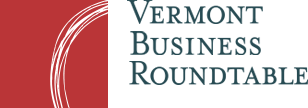Opinion Editorial by Lisa Ventriss, President
The good news is that Vermonters have had a very robust dialogue on education reform this year, which has moved us farther than previous years in terms of understanding of and agreement on the need for system-wide change. This is due primarily to the tremendous work of Vermont’s Education Secretary Rebecca Holcombe who, in a very brief period of time, has created a database of “current state” information on every school in Vermont. The bad news is that so much of our school data is suppressed because of micro-sized schools, but the available data tell a very troubling tale of the students currently in our PreK-12 education system. The worse news is that we have an even more challenging population coming into the system and we are not prepared for them.
There are so many threads of this policy fabric that it’s challenging to communicate them in a brief commentary. But at the highest level, the efforts to consolidate district governance, improve student-centered learning, and ensure sustainable funding are to make certain that we are spending our education dollars in the best possible way to get the best possible outcomes for all Vermont’s children. It’s about helping small schools benefit from being part of a larger system; about acknowledging that our neediest students are receiving 75 percent of their instruction from people least trained to teach them; and, about accepting that we have a dual society in Vermont today – those with and those without adequate education.
Furthermore, the issues of opiate addiction have taken their toll in frightening ways. Vermont has seen a 46 percent increase in homeless children; a 15 percent increase in children in protective custody; and a 41 percent increase in children ages 0-5 in protective custody. Unfortunately, for these and other reasons, our schools have become more than places of learning; they have evolved into safe havens for food and nutrition, physical and emotional safety, and health and wellness. All the more reason why we need to ensure that every school is part of a highly functioning system that can provide the kinds of educational and social enrichments these children deserve.
At the end of the day, equity, efficiency and sustainability must be the “triple bottom line” of our education reform efforts. This public conversation is about so much more than what’s happening in a single micro-school in a single rural community. This conversation has everything to do with the economic self-sufficiency and social well-being of all Vermont’s children, and the future vibrancy of our economy and democracy. How we improve as a society depends on how the Legislature acts in these final days of the session. Let’s ask ourselves, “What education solutions are in the public good versus the individual good?” and then, let’s have the courage to change.
# # #
